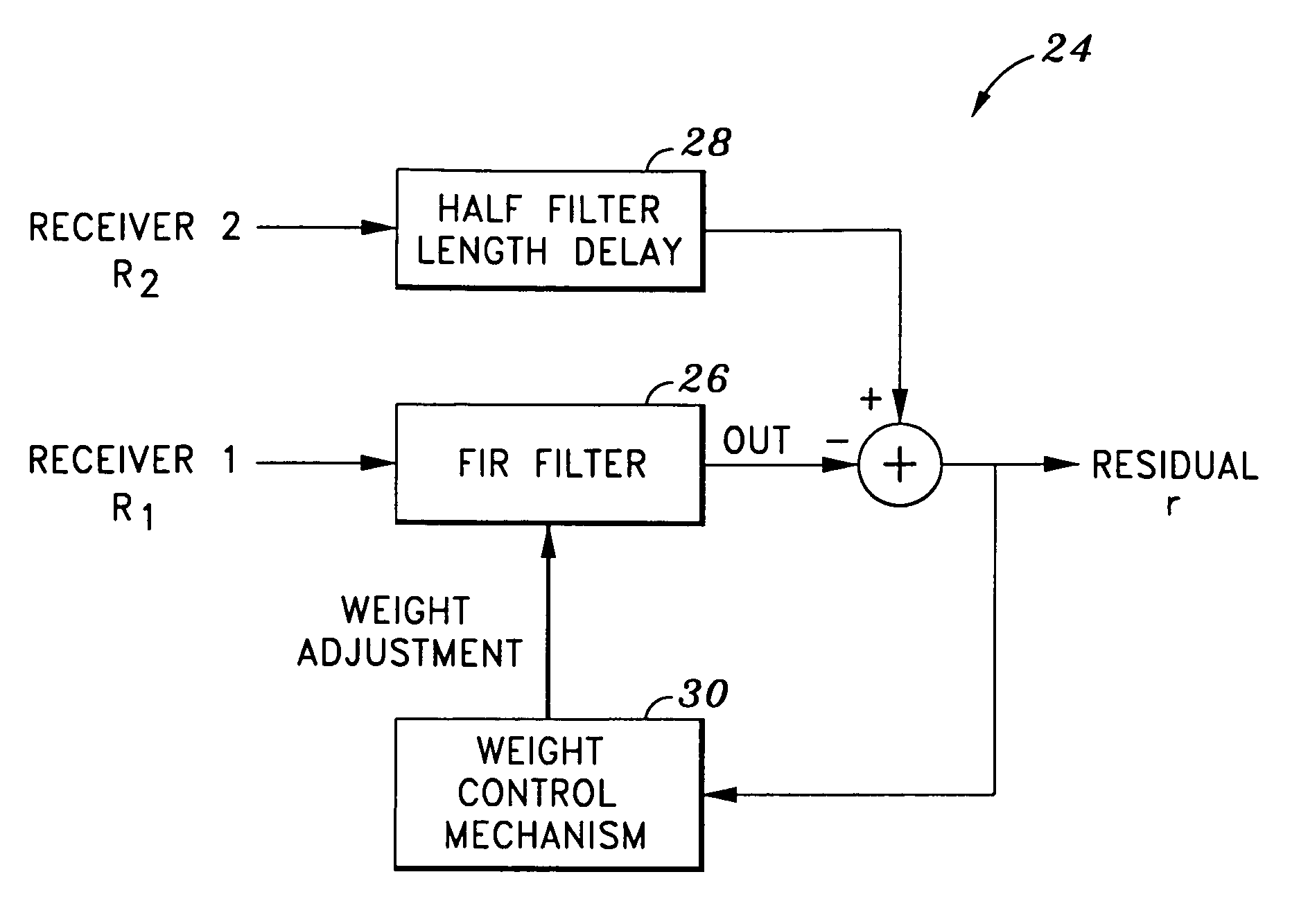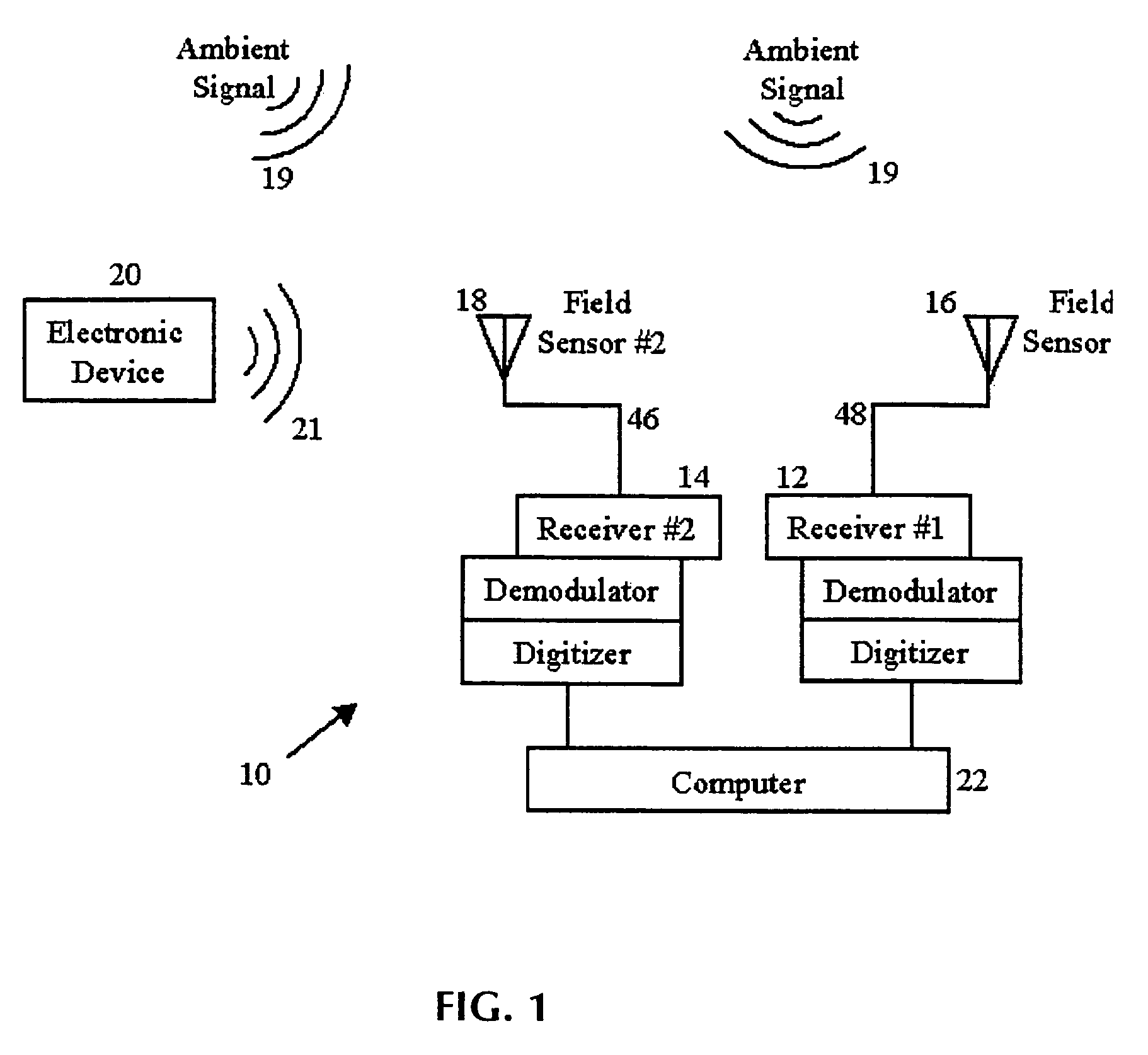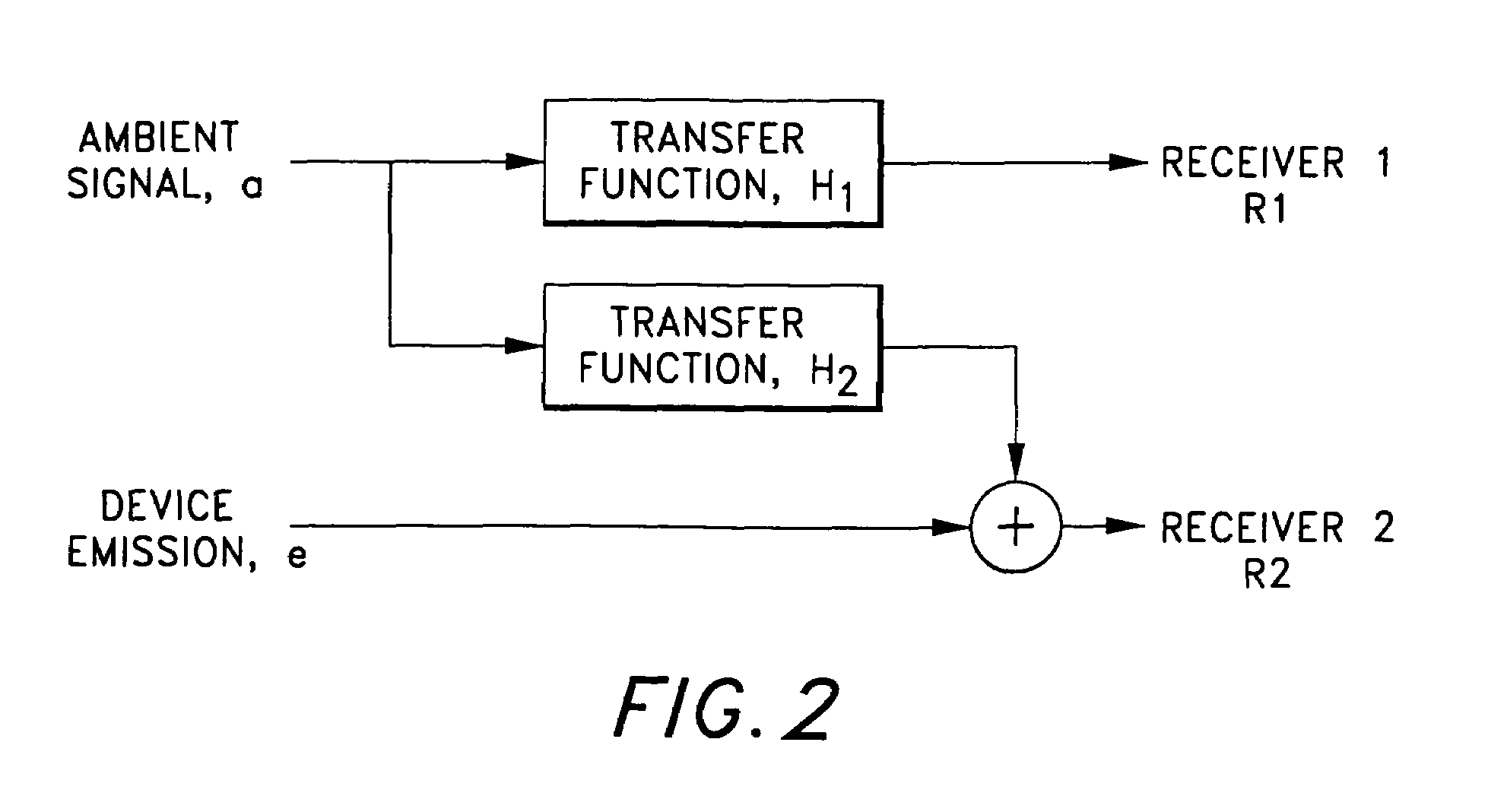System and method for measuring RF radiated emissions in the presence of strong ambient signals
a technology of ambient signal and rf radiation, which is applied in the field of system and method for measuring ambient signal strength, can solve the problems of personal computer lock-up, weak rf radiation emitted by the electronic device under test, and the increasing vulnerability of modern electronic devices to such rf interferen
- Summary
- Abstract
- Description
- Claims
- Application Information
AI Technical Summary
Benefits of technology
Problems solved by technology
Method used
Image
Examples
Embodiment Construction
[0029]Referring now to the drawings wherein the showings are for purposes of illustrating a preferred embodiment of the present invention only, and not for purposes of limiting the same, FIG. 1 shows an ambient suppression test configuration 10 for radiated emissions testing. The test configuration 10 comprises a first receiver 12 and a second receiver 14. The first receiver 12 is in electrical communication with a first field sensor 16. Similarly, the second receiver 14 is in electrical communication with a second field sensor 18. As seen in FIG. 1, the first field sensor 16 and the second field sensor 18 are both disposed in a location whereat they may receive ambient RF signals 19. As will be recognized by those of ordinary skill in the art, the ambient RF signals 19 are typically RF electromagnetic radiation emitted by local transmitters. Such ambient RF signals 19 may be produced by local television and radio stations, cellular phones, citizens band radios, ham radios, civil ra...
PUM
 Login to View More
Login to View More Abstract
Description
Claims
Application Information
 Login to View More
Login to View More - R&D
- Intellectual Property
- Life Sciences
- Materials
- Tech Scout
- Unparalleled Data Quality
- Higher Quality Content
- 60% Fewer Hallucinations
Browse by: Latest US Patents, China's latest patents, Technical Efficacy Thesaurus, Application Domain, Technology Topic, Popular Technical Reports.
© 2025 PatSnap. All rights reserved.Legal|Privacy policy|Modern Slavery Act Transparency Statement|Sitemap|About US| Contact US: help@patsnap.com



